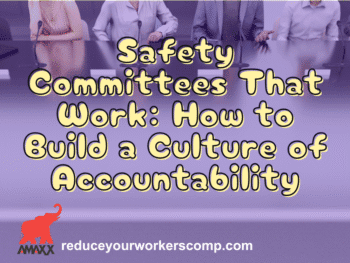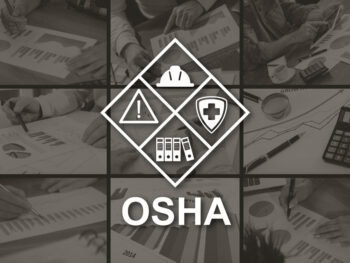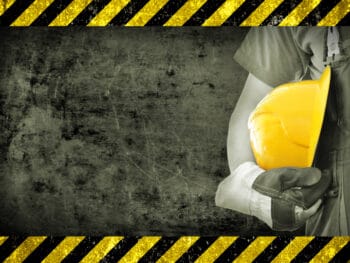
Nik Wallenda, of the famed Flying Wallendas, walks a tightrope. But he considers himself an artist rather than a daredevil because of the safety measures he takes. Before each walk, he spends months preparing for the worst case scenario — having the local fire department douse him and the wire with gallons of water before going over Niagara Falls, or generating 90-mile-an-hour winds with airboats pointed at him as he practices for a walk above the Grand Canyon. He even rehearses his rescue plan — if it’s ever needed — where he kneels down to the wire while rescuers can get to him within 90 seconds.
While the dangers he faces are much more than those for most workers, his methods are best practices that everyone can use: understanding the risks, training all involved, prepping for the actual event.
Assess the risks
Before sending workers into areas with known or unknown hazards, companies should be very familiar with the risks involved. For Nik Wallenda, that means researching the area where he plans to do a wire walk from all angles — including below, where onlookers could be at risk.
It’s similar for other professions; construction workers shouldn’t put ladders or scaffolding on ground that may be unstable, electrical workers shouldn’t be lifted up to utility wires on a day when high winds are expected, and office workers shouldn’t be sent on an errand in a company car that has features with which they are unfamiliar.
Companies can begin to identify risks by looking at the worker, tasks to be done, tools and the environment and how they may relate to one another. Some things to consider include overhead obstructions, power lines, moving equipment at the site, debris such as tree branches or cords, drop-offs or holes, ice and snow, and inadequate ventilation or lighting.
There are a variety of ways to assess risks.
- The first step can be just taking a walk around the worksite to see what hazards are obvious.
- Talk with people familiar with the work and/or the area can provide valuable insights. Get employees involved in the process to reveal known risks and better ensure they will take necessary precautions to protect themselves.
- OSHA’s website osha.gov has practical guidance on typical hazards.
- Read the instructions and material safety data sheets from manufacturers to pinpoint likely risks and how to reduce them.
- Review past accident records to identify and avoid repeat accidents.
Once hazards are identified, employers can consider various controls to reduce risks to employees.
Train and Educate Workers
Sending an untrained worker to do a job is like sending someone who has never driven a car into a truck on the highway — it’s a recipe for disaster. Your workers need to know what the risks are and how to avoid them. For example, if falling over tools is a danger, workers should be told to keep the work area clean and given a place to put tools when not in use.
Assigning responsibilities to specific personnel better ensures proper oversight is taken. Every employee should be aware of his own and the employer’s responsibilities for health and safety, and be familiar with ways to manage the hazards.
Any employee who could be exposed to a workplace hazard should be required to receive training. Issues they should understand are:
- Emergency procedures
- Injury/incident reporting
- What to do if a coworker is injured
- Proper use and maintenance of the equipment needed
Those doing the training should be vetted to ensure they are qualified, and should be required to meet certain criteria. Information about safety, such as posters, should be posted in areas where the greatest number of workers are likely to see them, such as a breakroom.
Prepping for Specific Activities.
Before he walked over Niagara Falls, Nik Wallenda and his team treated the wire and used special materials on the soles of his shoes to prevent slippage. In much the same way, employers should make all necessary preparations before workers embark on any hazardous task.
Conducting a final training — or prep — session allows one more opportunity to make sure workers know what they will be doing, how to prevent injuries, and ask any lingering questions they may have. The trainer or a qualified supervisor can conduct the session. It might also be advisable to act out skits where employees could or will face hazards and how they should handle them.
OSHA requires that employers provide workers with an environment that is “free from recognized hazards.” In addition to meeting the government’s mandate, a safety plan properly implemented can protect workers and save significant dollars on workers’ compensation claim costs.
For additional information on workers’ compensation cost containment best practices, register as a guest for our next live stream training.

Contact: mstack@reduceyourworkerscomp.com.
Workers’ Comp Roundup Blog: https://blog.reduceyourworkerscomp.com/
Live Stream WC Training: http://workerscompclub.com/livestreamtraining.com
©2016 Amaxx LLC. All rights reserved under International Copyright Law.
Do not use this information without independent verification. All state laws vary. You should consult with your insurance broker, attorney, or qualified professional.
Photo credit: _gee_ via Visual Hunt / CC BY















